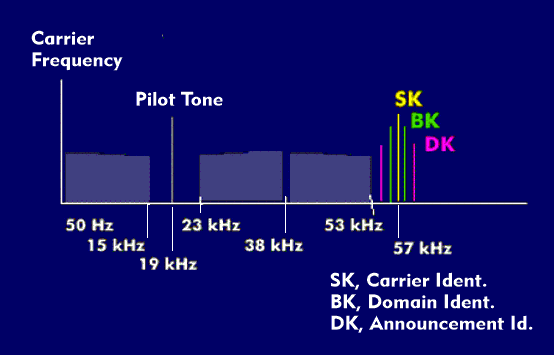station name
Station identifiers are used in radio and television broadcasts to identify the broadcasting station.
- In VHF broadcasting, the identification of the broadcasting station is transmitted on a subcarrier of the carrier signal. The frequency is 57 kHz, which is three times the pilot tone frequency of 19 kHz. It is used for automotive radio information(ARI). If the VHF transmitter transmits the ARI information, then it continuously transmits the 57 kHz signal as the transmitter identifier( SK). This station identification can also be evaluated by VHF receivers during automatic station scanning and used to receive the ARI information. The station identification (SK) corresponds to the Traffic Program( TP) of Radiotext. The 57-kHz subcarrier is also amplitude modulated at low frequency for the range identifier(BK) and the announcement identifier(DK).
- In order for the viewer to know which program he is watching, logos of the broadcasters are superimposed in one of the upper corners of the picture. The insertion is limited exclusively to the television programs. In the case of commercials, the station identifiers are hidden. Since the identifiers are statically located in one place on the screen, it is possible to determine in the television signal whether a television program or an advertising insertion is currently running. This signal detail is exploited by ad blockers that blank out the commercials in video recordings.

